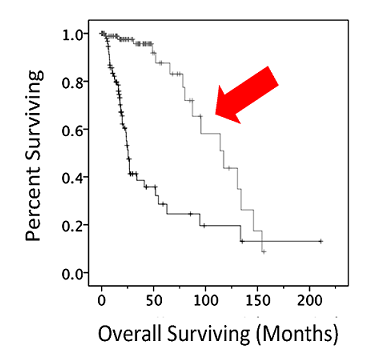Competitive Advantages
- A prognostic biomarker for LGG and neuroblastoma
- May be used to develop new treatments
- May increase patient survivability
Summary
The association of the MAPT gene (microtubule-associated protein Tau), which encodes Tau protein, with various tauopathies and other neurological disorders has long been established. However, the role of Tau in brain cancers, and specifically, low-grade glioma, has not been explored.
USF researchers have discovered a new biomarker for a more accurate prognosis for both LGG and pediatric neuroblastoma patients. RNASeq data from the Cancer Genome Atlas (TCGA) revealed that high expression of the MAPT gene is very strongly associated with increased overall and disease‑free survival in these cancer patients. While the Tau mechanism in these cancers is unknown, they demonstrated that increased Tau expression was correlated with an increase in the expression of several apoptosis-effector genes; and that lack of Tau was associated with a higher level of proliferation-effector gene expression. In addition, the histological grade of the tumor was inversely correlated with Tau expression.
Research in this field has suggested that gliomas need to lose Tau expression to progress into a more aggressive entity thereby indicating that Tau functions as a brake in the evolution of cancer pathology. Assessing MAPT (Tau) levels in brain cancer patients can help diagnose and guide treatment plans. For example, brain cancer patients with low levels of tau may be candidates for cordycepin treatment which is known to raise tau levels. Further research will probably uncover novel aspects of the biology of this protein that could help to understand the origin of brain cancers.

Patients with Higher MAPT Levels (Arrow) Presented Greater Survival Rates Than Those Who Expressed Lower Levels
Desired Partnerships
- License
- Sponsored Research
- Co-Development